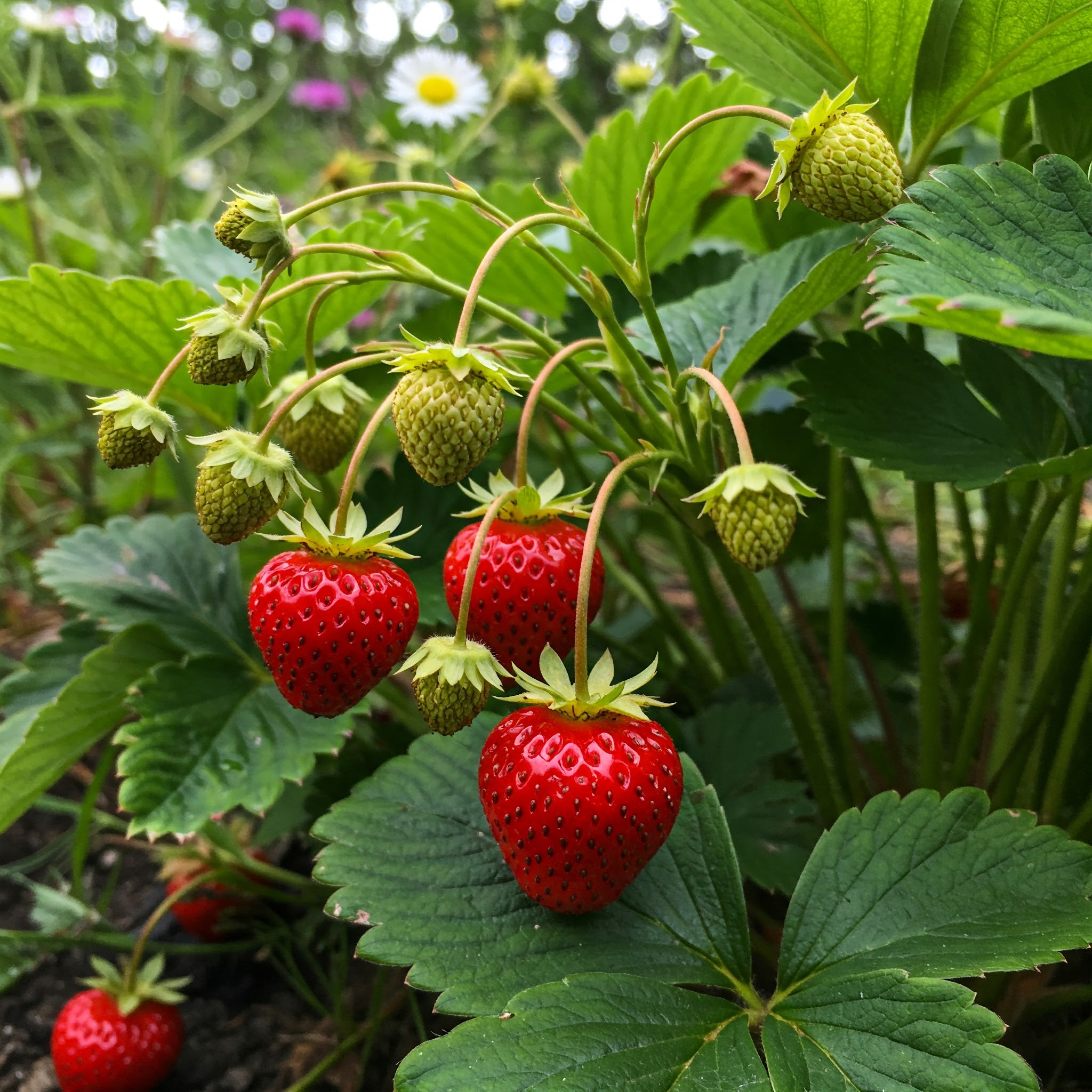Growing Strawberries Indoors: A Blend of Science and Care
"To plant a garden is to believe in tomorrow." — Audrey Hepburn
The Science of Strawberry Growth
Strawberries (Fragaria × ananassa) thrive under specific conditions that can be mathematically modeled. The ideal light exposure for fruit production follows a logistic growth curve:
$\(L(t) = \frac{L_{max}}{1 + e^{-k(t - t_0)}}\)$
Where:
- \(L(t)\) is the light intensity at time \(t\),
- \(L_{max}\) is the maximum light capacity (around 12-16 hours/day),
- \(k\) is the growth rate,
- \(t_0\) is the midpoint of the growth phase.
Optimal temperature ranges between 18-24°C (64-75°F), and water requirements can be expressed as:
$\(W = A \times E \times K_c\)$
Where \(W\) is water need, \(A\) is plant area, \(E\) is evaporation rate, and \(K_c\) is a crop-specific coefficient (approximately 0.8 for strawberries).
The Indoor Growing Process
Growing strawberries indoors involves a series of steps that balance nature and nurture:
This process adapts outdoor gardening to the controlled indoor environment.
Comparing Indoor and Outdoor Growing
Indoor strawberry cultivation differs from traditional outdoor methods in key ways:
| Aspect | Indoor Growing | Outdoor Growing |
|---|---|---|
| Light | Controlled artificial sources | Natural sunlight |
| Temperature | Stable, adjustable | Weather-dependent |
| Space | Vertical or compact systems | Horizontal garden beds |
| Pests | Minimal, manageable | Varied, seasonal |
| Yield Control | Predictable, year-round | Seasonal, variable |
The Biology of Strawberry Plants
Strawberry growth relies on photosynthesis, where light energy converts to chemical energy:
$\(6CO_2 + 6H_2O + light \rightarrow C_6H_{12}O_6 + 6O_2\)$
The plant’s runners (stolons) extend horizontally, producing new plants—a process quantifiable as:
$\(R_n = R_0 \cdot e^{rt}\)$
Where \(R_n\) is the number of runners, \(R_0\) is the initial count, \(r\) is the growth rate, and \(t\) is time.
Decision Points in Indoor Gardening
Each stage of indoor strawberry growing involves choices that shape success:
These decisions create a tailored growing experience.
Evolution of Indoor Gardening
Indoor strawberry cultivation reflects broader trends in home gardening:
Optimizing Growth Conditions
The relationship between light, water, and nutrients can be modeled as a system of equations:
$\(Y = \alpha L + \beta W + \gamma N\)$
Where:
- \(Y\) is yield,
- \(L\) is light hours,
- \(W\) is water volume,
- \(N\) is nutrient concentration,
- \(\alpha, \beta, \gamma\) are weighting factors.
Adjusting these variables maximizes fruit production.
The Indoor Ecosystem
Indoor strawberry growing forms a micro-ecosystem with feedback loops:
The Chemistry of Strawberry Flavor
Flavor development involves sugars, acids, and volatile compounds:
| Component | Primary Chemicals | Role | Source |
|---|---|---|---|
| Sweetness | Glucose, Fructose | Energy storage | Photosynthesis |
| Acidity | Citric Acid | Tartness | Metabolic processes |
| Aroma | Esters, Furaneol | Fragrance | Ripening phase |
| Color | Anthocyanins | Visual appeal | Pigment synthesis |
The sugar-acid balance can be expressed as:
$\(Taste = \frac{[Sugars]}{[Acids]}\)$
A ratio of 10-15 typically yields the sweetest berries.
Looking Ahead
Indoor strawberry growing combines human ingenuity with scientific precision. The tactile joy of tending plants, the satisfaction of fresh fruit, and the ability to nurture life indoors remain uniquely human experiences, even as technology enhances the process.
"The glory of gardening: hands in the dirt, head in the sun, heart with nature." — Alfred Austin
This article was crafted with care, blending horticultural science, practical advice, and a passion for growing food at home.
